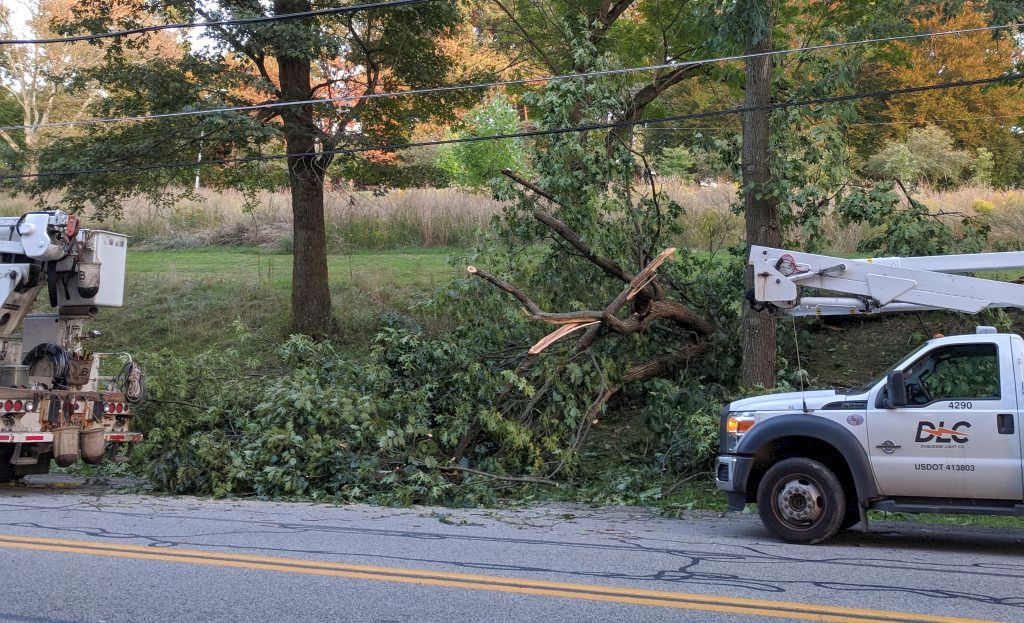
Yesterday morning this oak was intact as we searched it for warblers in Schenley Park. Last evening three Duquesne Light trucks were parked below it, fixing the wires it hit when a big chunk fell on Bartlett Street.
Here’s what broke (photo below). Most of the tree still stands but I wouldn’t be surprised if DPW chops it down now that it “misbehaved.”
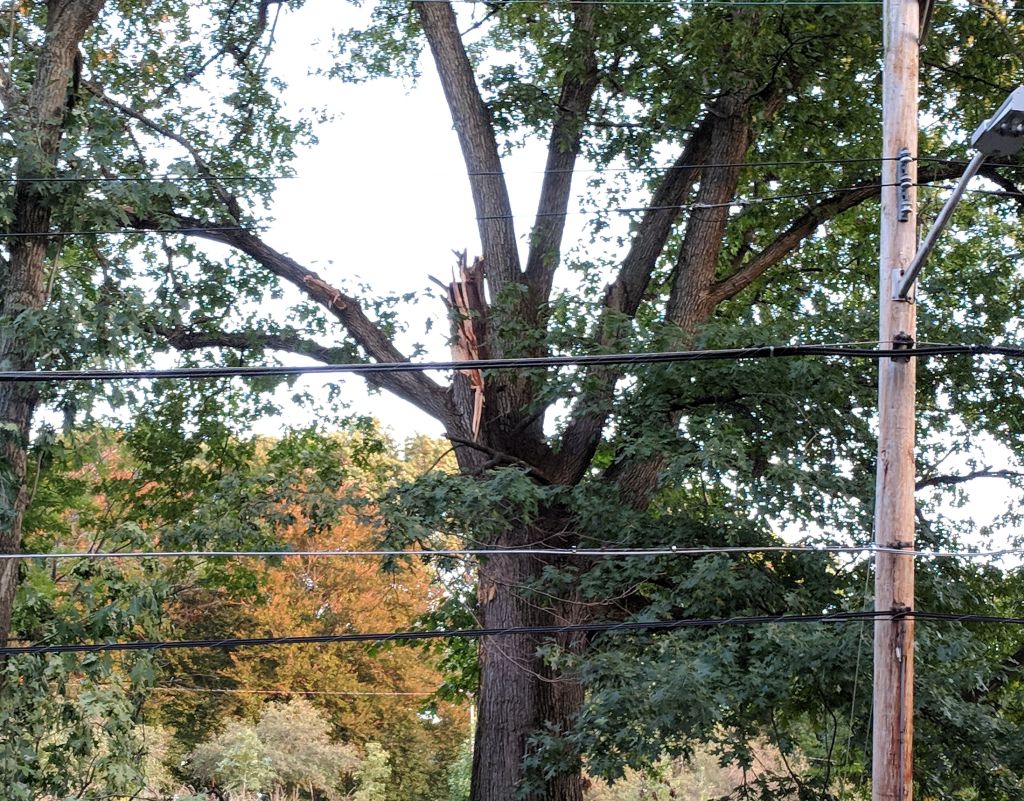
This is not the only 100-year-old oak that’s fallen in the park in recent weeks. This oak fell across the Falloon Trail in July …
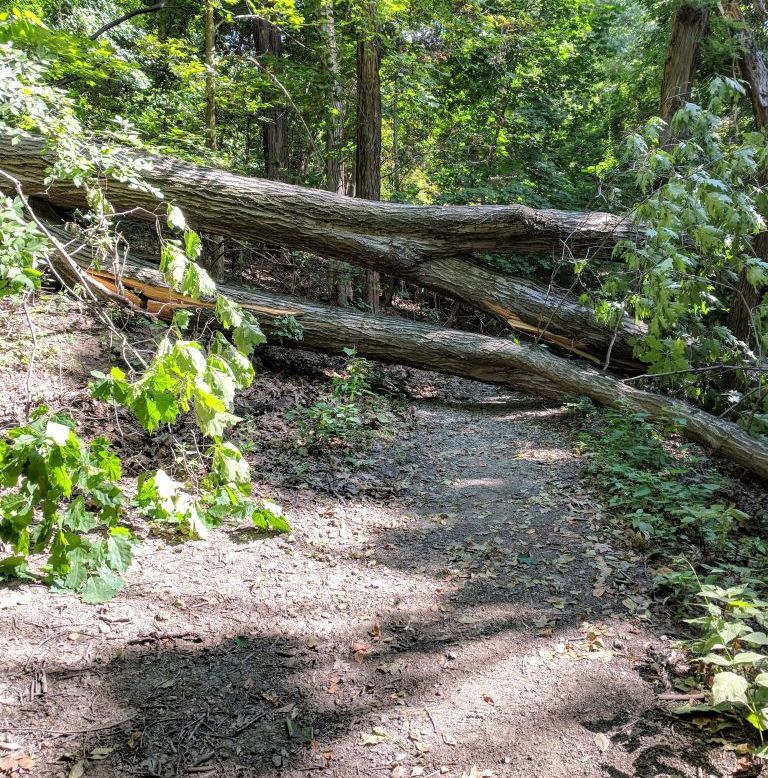
… and this one fell last week at the edge of Overlook Drive.
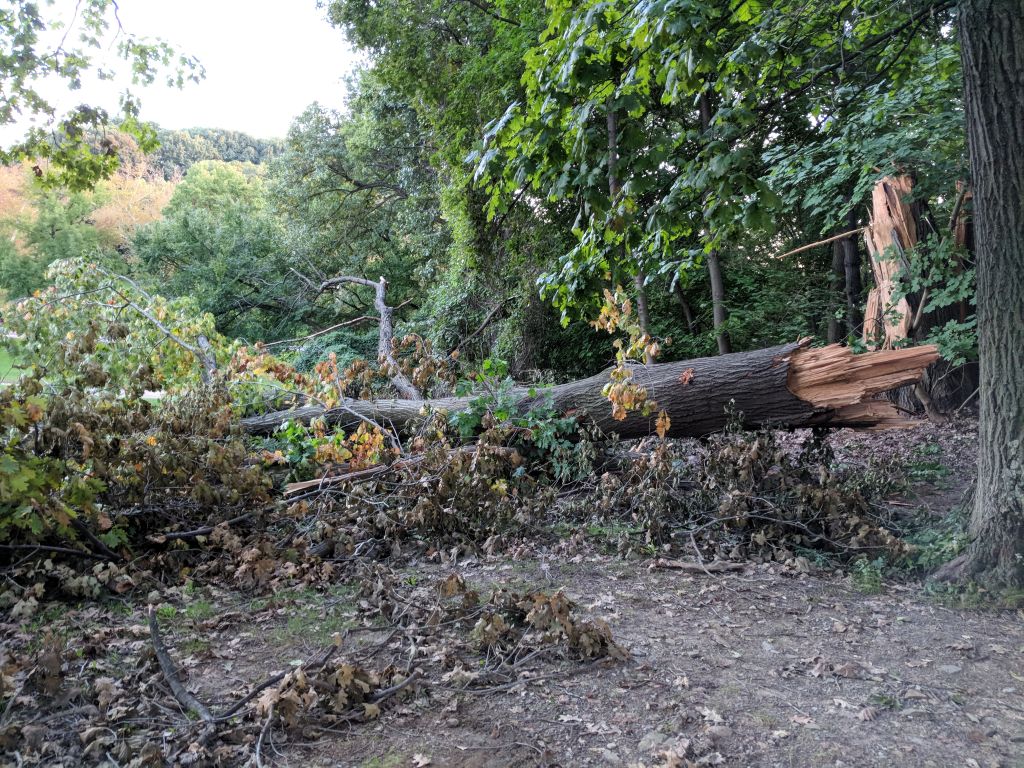
None of the crashes were caused by strong wind. The trees just broke and fell. The Fallon and Overlook trees had root rot, caused by Armillaria fungus. (See below for more on the Bartlett tree.)
You can see it inside this fallen trunk: black sheets of old Armillaria and white sheets of mycelium, the new growth, in the center.
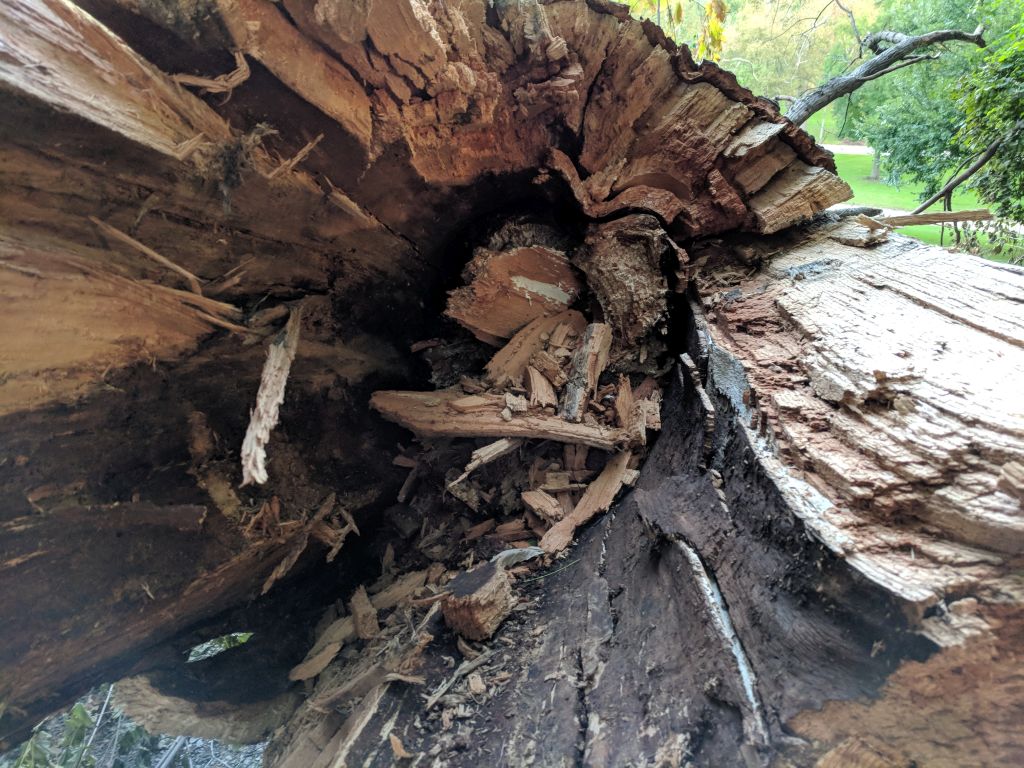
If this stump was damp on a warm, very dark night (impossible in Schenley Park) the fungus would glow in the dark — a phenomenon called foxfire.
We usually don’t know that a tree is infected but the fungus will give us a hint this month. Armillaria produces fruit in autumn that we call honey mushrooms. (Here’s a USDA photo of one species, Armillaria tabescens.)
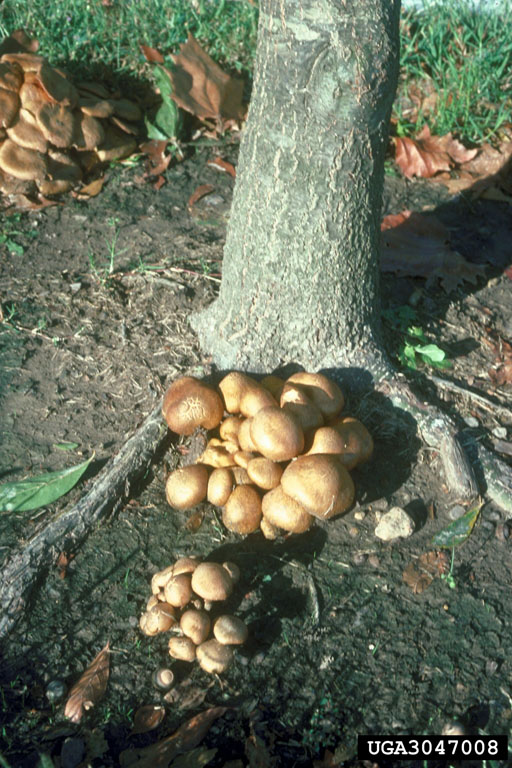
If you find honey mushrooms at the base of a tree, that tree is infected.
Unfortunately there’s a lot of Armillaria in Schenley Park. I’ll look for mushrooms this month to find out who’s in trouble.
NEWS about the Bartlett tree: The branch that fell on Bartlett Street was hollow — probably not Armillaria but it was bad nonetheless. Here’s a photo of the thickest part of the branch after it was chopped up.
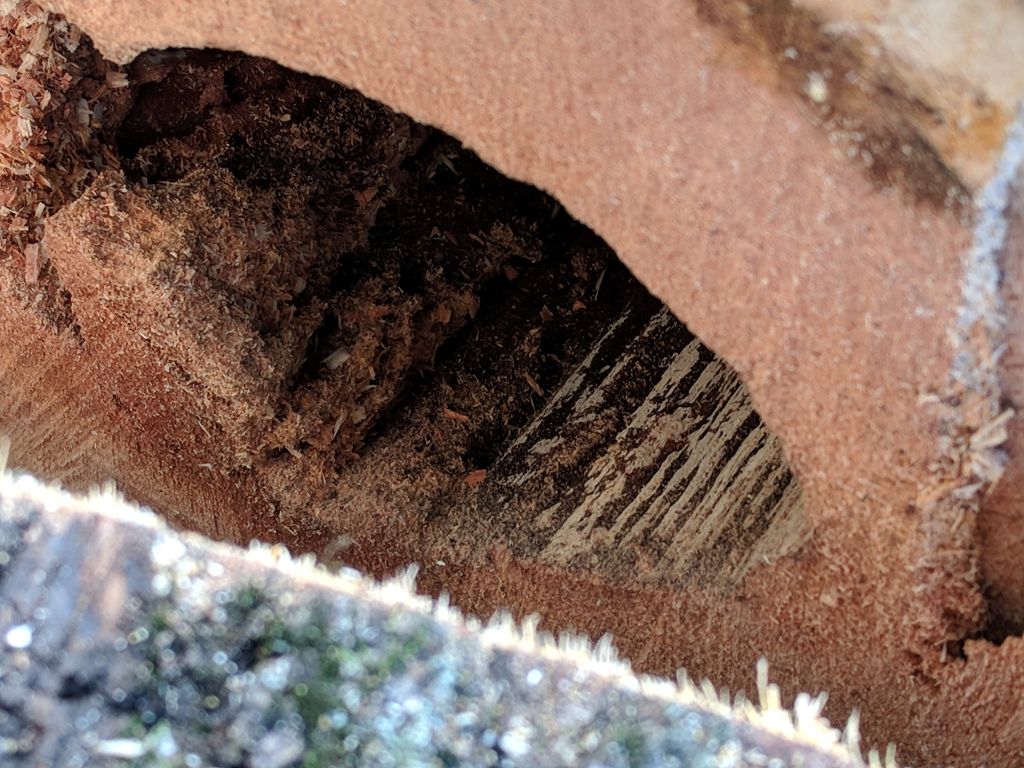
p.s. Yes there are mushrooms in the city parks but it’s illegal to harvest them, even for personal use.
(Schenley Park tree photos by Kate St. John. mushroom photo by Theodor D. Leininger, USDA Forest Service, Bugwood.org)
Really interesting! Thanks
Thanks Kate. I will keep an eye out for these mushrooms under my oak.
https://www.mushroomexpert.com/armillaria_tabescens.html
Here in Forest Hills Borough, we recently had a large black cherry (Prunus serotina) fall across our street. No evidence of fungal infection. Presumably just growth toward the “gap” of our road, the tree felled by virtue of water-saturated soil. But we were without power or internet for two days. Black cherry is a pioneer “weed” tree, much like the black locusts (Robinia pseudoacacia) so common here in Forest Hills. Oaks are rare here.
Great info, Kate. Thanks!